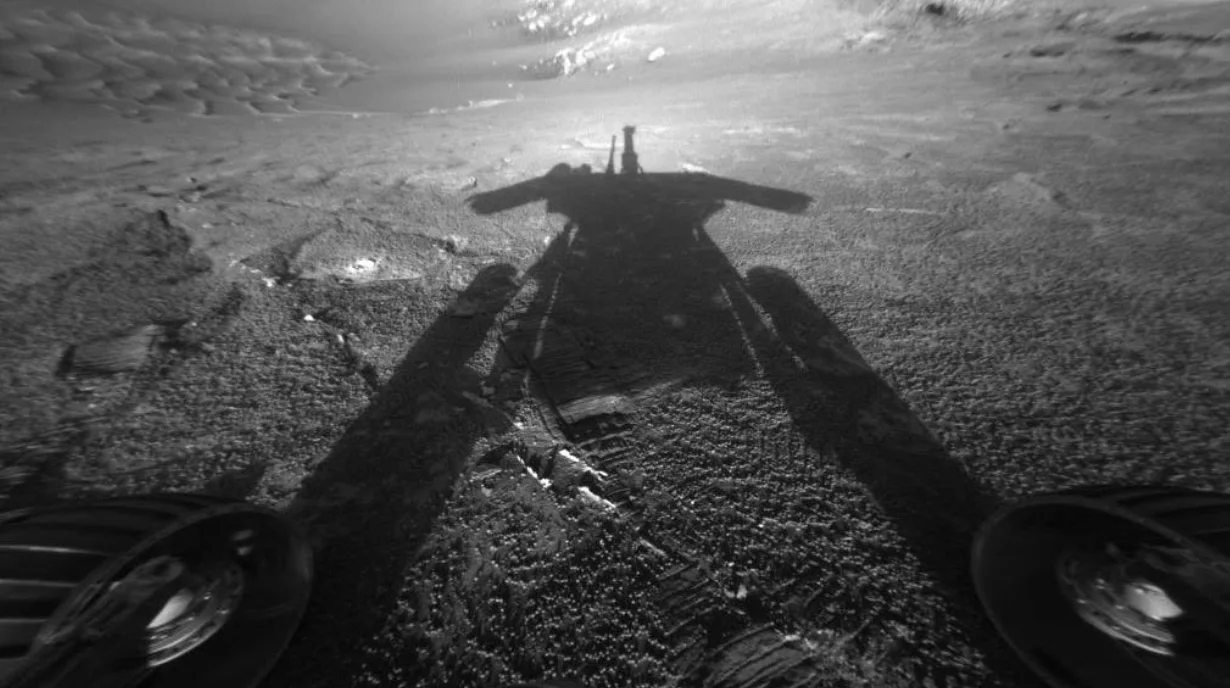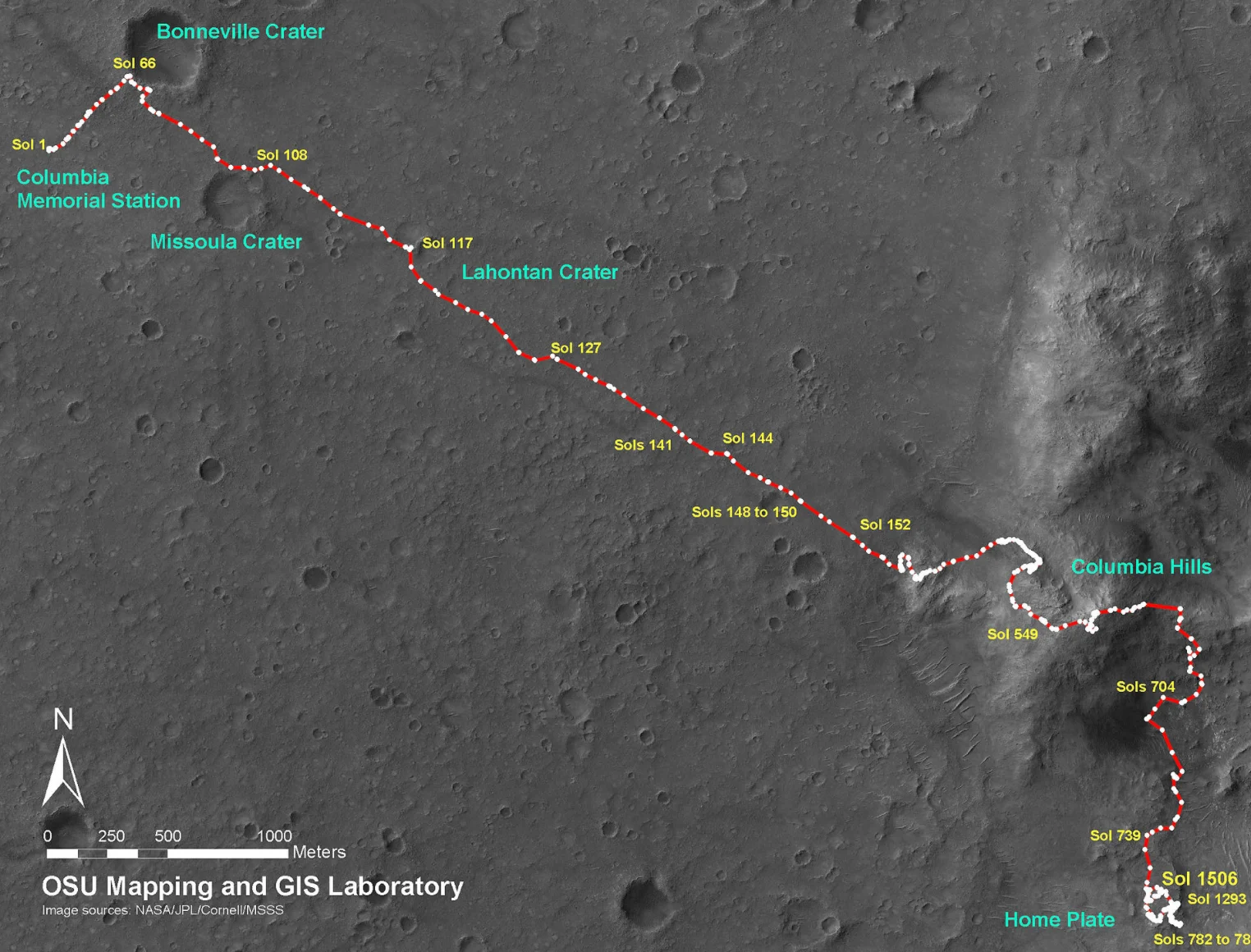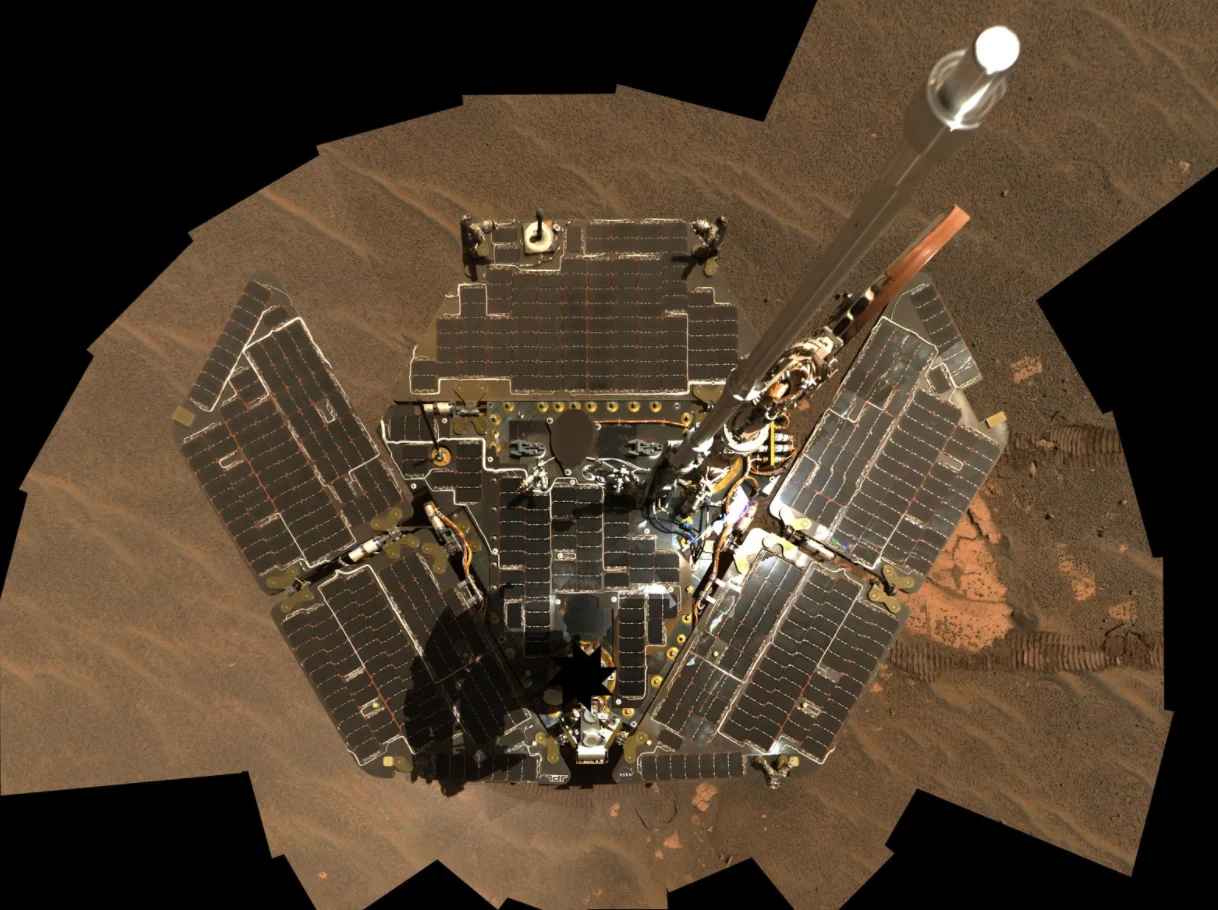
Recalling when the Mars Exploration Rover 'Spirit' started its 6-year journey
The Spirit's primary job was to investigate Mars for 90 sol days (sol days are 39.7 minutes longer than Earth days) — it stayed operational for years!
This Day In Weather History is a daily podcast by Chris Mei from The Weather Network, featuring stories about people, communities and events and how weather impacted them.
--
On Jan. 3rd, 2004, the Mars Exploration Rover, Spirit, landed on the aforementioned planet to collect data on rocks, soil, and water. Proving the existence of water on Mars is a big ask, so Spirit was joined 21 days later by its twin Opportunity.
Spirit and Opportunity were doing the primary research part of NASA's Mars Exploration Rover Mission (MER).
The rovers were the size of a golf cart but weighed about 405 pounds each. The plan was to place each rover on opposite sides of Mars so they could perform geological investigations as they roamed.

Map of Spirit's track up to 2008. (NASA/Wikipedia)
They also took photographs.

"Opportunity Self-Portrait: Opportunity used its panoramic camera to take the images combined into this mosaic view of the rover." (NASA/JPL-Caltech/Cornell)
The rovers' initial investigation was only supposed to last 90 sols (Martian days, which equals 92.475 Earth days). Spirit was operational until March 2010 and NASA officially declared the mission over on May 24, 2011. Opportunity stayed active until 2018, and was declared lost on February 13, 2019.
Spirit and Opportunity went above and beyond their duties. Listen to today's episode of "This Day In Weather History" to hear the incredible details of their missions. A couple of highlights of MER's accomplishments are that it uncovered evidence that Mars used to be a lot wetter and it unearthed almost pure silica, the main ingredient of window glass.

*Rover unearthed silica-rich dust. (Wikipedia).
Subscribe to 'This Day in Weather History': Apple Podcasts | Amazon Alexa | Google Assistant | Spotify | Google Podcasts | iHeartRadio | Overcast'
Thumbnail courtesy of NASA/JPL-Caltech